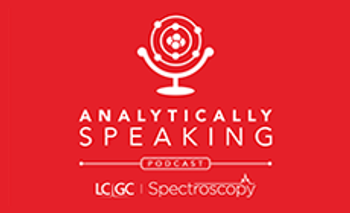
Best of the Week: Spectroscopy in Education, NIR in Athletics, Raman Imaging
Top articles this week include how spectroscopy is being used in education, athletics, and biology.
This week, Spectroscopy published various articles that covered many topics in analytical spectroscopy. This week’s articles feature techniques including near-infrared (NIR) spectroscopy and surface-enhanced Raman spectroscopy (SERS). Below, we’ve highlighted some of the most popular articles, according to our readers and subscribers. Happy reading!
This article discusses the historical development and educational integration of spectroscopy, highlighting its role in fields from food analysis to space exploration. Valentina Domenici and her team from the Università di Pisa explored how spectroscopy is traditionally taught using Johnstone’s triangle of chemistry education, emphasizing the macroscopic level for high school students. They proposed a didactic sequence tracing the evolution of spectroscopic instruments, linking historical milestones with hands-on activities (1). By combining historical context with laboratory experiments, they aimed in their study to enhance student engagement and understanding of spectroscopy, ultimately bridging historical advancements with modern educational practices (1).
With the Paris 2024 Olympics underway, athletics is on the mind of many people around the world. This article is a compilation of some of the latest studies that use spectroscopy to monitor athletic performance (2). Two trends emerge among the studies discussed in this article: one is that wearables technology is currently a hot topic, and another is that muscle oximetry is also a popular subject of interest.
This article discusses the transformative potential of highly multiplexed Raman imaging in three-dimensional (3D) spatial biology, as reviewed by researchers Yingying Li, Yuchen Sun, and Lixue Shi from Fudan University. Traditional imaging technologies fall short in providing the necessary depth and clarity for understanding complex biological interactions (3). Stimulated Raman scattering (SRS) microscopy emerges as a promising alternative, offering high-speed, high-resolution, and noninvasive imaging (3). Despite challenges like improving detectability and expanding imaging colors, advancements in SRS spectroscopy, Raman probes, and computational algorithms are enhancing its capabilities, with significant implications for oncology, neuroscience, and other fields (3).
In this interview, previously published in European Spectroscopy News, Dave Briggs sat down with 1981 Nobel Prize winner Kai Manne Börje Siegbahn to discuss his career and work in spectroscopy (4). Much of this interview focuses on Siegbahn’s work in nuclear and electron spectroscopy that led to the development of a new spectroscopic technique, called electron spectroscopy for chemical analysis (ESCA) (4).
This article discusses the potential of surface-enhanced Raman spectroscopy (SERS) in diagnosing brain and central nervous system disorders, particularly in low- and middle-income countries. SERS enhances traditional Raman spectroscopy, addressing its limitations by increasing signal intensity and sensitivity (5). Researchers from Teesside and Newcastle Universities highlight SERS's applications in diagnosing diseases like Alzheimer's, Parkinson's, stroke, and brain cancer, as well as its use in brain surgeries and neurotransmitter detection (5). Despite challenges such as portable device development and data processing complexity, SERS shows promise in advancing brain research and improving diagnostic accuracy through innovations and machine learning integration (5).
References
(1) Wetzel, W. Revising Chemistry Education: Teaching Spectroscopy at the High School Level. Spectroscopy. Available at:
(2) Wetzel, W. Near-Infrared Spectroscopy in Athletics. Spectroscopy. Available at:
(3) Workman, Jr., J. Breaking Boundaries in 3D Biology: The Power of Highly-Multiplexed Raman Imaging. Spectroscopy. Available at:
(4) Michael, I. The Story of ESCA: An Interview with Nobel Prize Winner Kai Siegbahn. Spectroscopy. Available at:
(5) Workman, Jr., J. Breakthroughs in Brain Research: Surface-Enhanced Raman Spectroscopy Paves the Way. Spectroscopy. Available at:
Newsletter
Get essential updates on the latest spectroscopy technologies, regulatory standards, and best practices—subscribe today to Spectroscopy.




